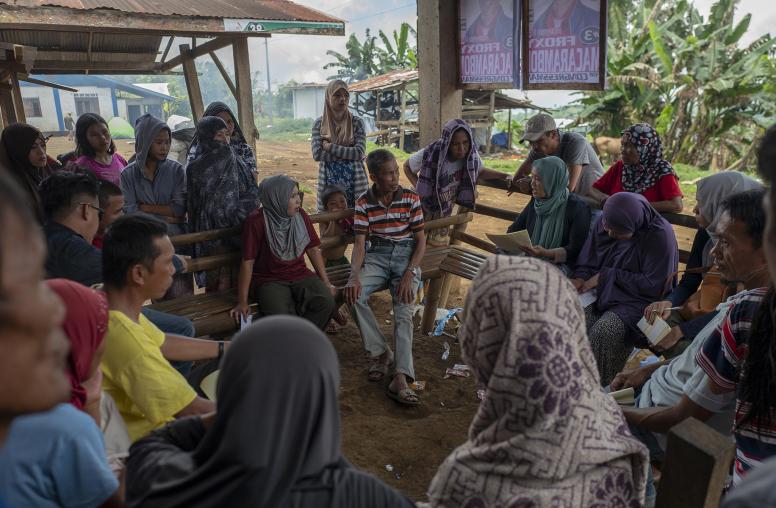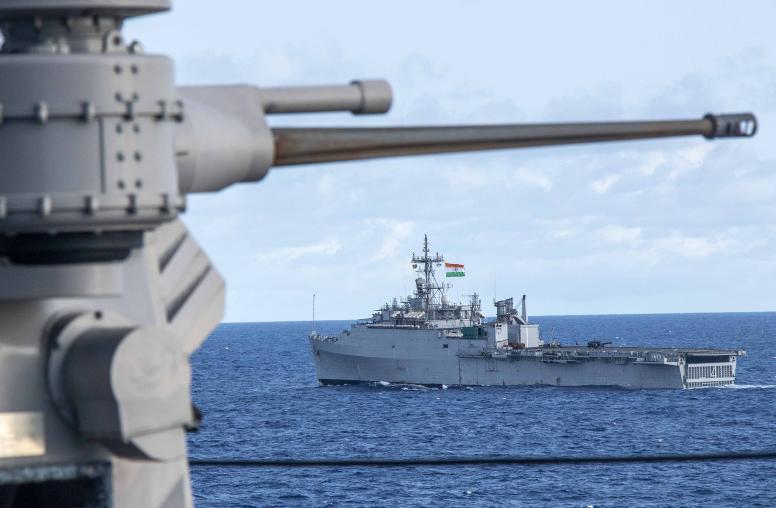How the Hong Kong Protesters Can Win
Over a century's worth of data shows that the Umbrella Revolution needs business, satire, and a whole lot of patience.

“Don't think that this will be over soon. This is fundamentally a war of patience and a test of our endurance," 17-year-old Joshua Wong, student leader of pro-democracy protests in Hong Kong, tweeted on Thursday. For the past several weeks, the protesters have been putting on a clinic in organized, disciplined civil resistance: Tens of thousands of activists continue to throng the downtown streets and thoroughfares, demanding the resignation of Hong Kong chief executive Leung Chun-ying and threatening to occupy government buildings. Occupy Central, student coalitions, and other opposition groups have called for mass strikes while insisting that they will not back down until their ultimate goal of universal suffrage is achieved. Still, as momentum has slowed, the lingering question is, what next?
Beijing probably expects to wage (and win) a war of attrition against this civilian uprising.
Beijing probably expects to wage (and win) a war of attrition against this civilian uprising. The main challenge now for the Hong Kong democracy movement is to maintain pressure while withstanding inevitable repression and finding ways to erode Beijing's pillars of local support. It needs to find the right balance of disruption and engagement, to work inside and outside of traditional political and legal institutions, and to prepare for a multi-year struggle.
In the face of a Goliath as formidable as the Chinese state, though, do the polite and savvy oppositionists of Hong Kong really have any hope of succeeding? My Why Civil Resistance Works co-author, Erica Chenoweth, and I found that similar nonviolent campaigns from around the world that challenged incumbent regimes from 1900-2006 succeeded about 53 percent of the time. During that same time period, nonviolent campaigns were more likely than armed ones to be followed by democracy within a decade -- even when the nonviolent campaigns failed. This highlights the importance of creating and sustaining civic space as a key factor in bringing about democracy.
Victory, in this case, means achieving genuine universal suffrage and democratic governance in Hong Kong. Even if sustained pressure forced the embattled chief executive to step down, the movement still would not have achieved its ultimate goal of a self-governing polity that freely elects its leaders. Studies have found that the average nonviolent campaign takes nearly three years to run its course (versus armed campaigns, which average nine years). As such, our definition refers to the long view: This isn't a struggle that will be won (or lost) in a weekend. Wong, for one, has said that electoral reform will be a "generational war."
The movement is off to an impressive start. The Hong Kong democrats have exhibited remarkable creativity and organizational prowess. Although Hong Kong is famous for its protest spirit, the level of participation and self-organization in the "Umbrella Movement," as it has been dubbed, is unprecedented. Months of studied and organized mass actions paved the way to huge National Day rallies. Youthful audacity and fence-jumping, followed by a police response that backfired, caused the number of protestors to spike.
With a bevy of local and international journalists on the scene, unfettered access to internet (inside Hong Kong, at least), and the clever use of "Firechat" intra-movement messaging, the pro-democracy movement has won some serious media points. The movement has maintained the strictest nonviolent discipline -- making the riot police behavior and Beijing's claims that the protestors are ruffians all the more outrageous.
Still, there is much more that the movement can do to apply lessons from the strategies of campaigns that succeeded against similarly overwhelming odds.
The size and diversity of participation in civil resistance movements is strongly correlated with success, and the Hong Kong movement needs to grow. The mass protests in Hong Kong have featured tens of thousands -- maybe even hundreds of thousands -- of participants, spanning young and old, men and women, Christian, Taoist and Buddhist, white and blue collar workers. But who the protesters are matters just as much as how many of them there are, and right now, the democracy movement needs to attract support from key pillars in the business community that are either on the fence or currently supporting Beijing. When citizens of the Philippines challenged the "crony capitalism" of the Ferdinand Marcos regime, they did so with the help of the business community from the powerful Makati financial district, and small and medium enterprises in Ukraine played a key role in sustaining the Maidan movement. A targeted consumer boycott of businesses most closely aligned with Beijing, combined with the creation of a "white list" of the most pro-democracy businesses in Hong Kong, is one way to create economic leverage.
Doing so would also give more the movement more tactical diversity: another key ingredient of successful civil resistance.
Tactical innovation keeps movements energized and resilient, and their opponents off-guard, and pressure points maximized.
Tactical innovation keeps movements energized and resilient, and their opponents off-guard, and pressure points maximized. So far the Hong Kong democracy movement has relied heavily on methods of concentration like sit-ins and street demonstrations. These are hard to sustain and, particularly as participation levels dwindle, easy to target with repression. The one major tactical mistake the Chinese students made in 1989, some analysts have suggested, was occupying Tiananmen Square for too long.
Tactical shifts are highly practical. The copper miners in Chile, who played a critical role in the pro-democracy movement that ousted Augusto Pinochet, knew when to avoid direct confrontations with the security forces. Instead of pitched battles, the miners and other democracy leaders called on the Chilean population to walk slowly in the streets to show their rejection of the Pinochet regime, while banging pots and pans at a designated hour to create a national chorus of defiance. Turkish anti-corruption activists managed to get a significant portion of the population to switch their lights on and off for one minute every night as part of a successful campaign to shine light on corruption in 1997. These symbolic tactics help maintain unity and solidarity while helping prepare for possibly more complex (and risky) actions.
At the end of the day, the democracy movement needs to create cracks and fissures within the Hong Kong political and economic elites in order to achieve its aims. Targeted consumer boycotts of select businesses in apartheid South Africa forced white business owners to pressure the government into negotiations with the African National Congress (ANC), for example. Clever, satirical media spots and street theater poking fun at the most corrupt members of the government and business communities is another tried and true method, used by pro-democracy groups in Serbia (against Slobodan Milosevic) and Ukraine (against Viktor Yanukovych). Establishing public awards for whistleblowers and pro-democracy business and labor leaders is another way to incentivize loyalty shifts within the pillars propping up Beijing's power in Hong Kong.
All of this has to be done while holding the movement together. Most popular struggles grapple with staying unified around goals, leaders, and tactics -- particularly with an opponent that is skilled at combining cooptation with repression. There will likely come a time when the Hong Kong democracy movement will have to choose whether to accept concessions short of full victory, and when it does, it will help if all the major elements in the opposition have a say in the decision. When the Polish Solidarity movement, led by Lech Walesa, became so strong that it forced its way to the negotiating table, the actual talks with Communist regime members were broadcast via loudspeaker to ordinary Poles so that they knew what was going on. One could imagine a modern day equivalent to this communications strategy in Hong Kong.
The Polish Solidarity movement is also instructive because of the level of self-organization and governance that happened outside of communist government control. Kosovo Albanians, similarly, created a parallel parliament and other governance institutions as a way to de facto break away from Belgrade before the territory achieved independence. The Hong Kong democracy movement has already launched a successful, albeit unofficial online referendum about the future political system. And its civil society is clearly well organized. While territorial independence is not the goal of the movement, creating a participatory, representative system of governance inside the city-state clearly is. Some combination of working within official political and legal institutions and outside them, via parallel structures and institutions, is a strategy that dates back to Gandhi.
The Hong Kong democracy movement has no shortage of talented, strategic thinkers. The movement has already demonstrated maturity and cleverness. But it faces a stalwart, well-resourced opponent. It remains to be seen whether, and how, Hong Kong's civil resistance movement will outmaneuver its authoritarian opponent and keep the flame of democracy alive and well. But if the umbrella-wielders are in it for the long haul, their chances of victory might be better than you think.
Reposted with permission from ForeignPolicy.com, Source: “How the Hong Kong Protesters Can Win"




